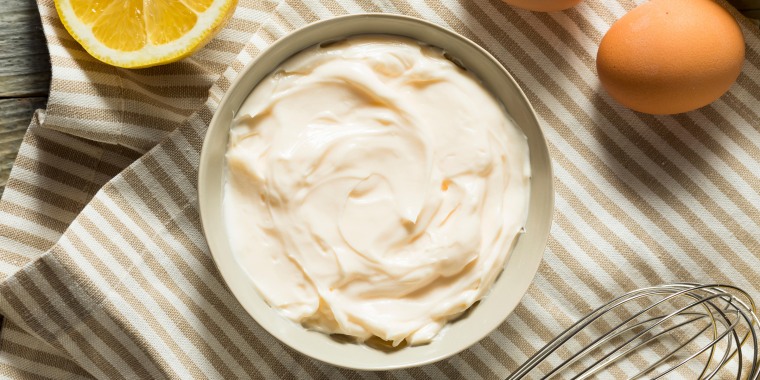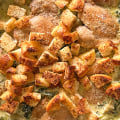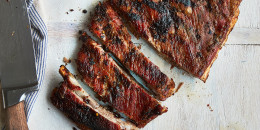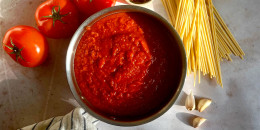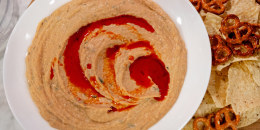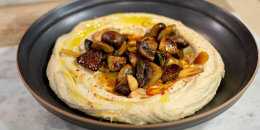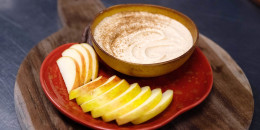Chef notes
When it comes to certain condiments (Dijon mustard, ketchup as good as Heinz), making from-scratch versions at home is rarely worth the trouble. The main exception: mayonnaise. DIY mayonnaise is incredibly easy and cheap, not to mention delicious. It requires just a few ingredients that are probably already in most kitchens: egg yolk, salt, mustard, oil and something acidic like vinegar and/or lemon juice. When aggressively combined, the yolk and mustard bind with the oil and the acid to form an emulsion, meaning the individual ingredients become one thick, creamy unit.
A good mayo gets its richness from oil and egg yolk. Typically neutral oil, like canola or safflower is preferable — as its name suggests, it has minimal flavor; however if you’d like a subtly grassy flavor to your mayo, go olive (no need to use the top-shelf extra-virgin stuff though, any everyday olive oil will do).
Now, let’s address the yolk of it all: If anyone’s ever yelled at you about eating raw cookie dough, you’re familiar with the risk of salmonella in raw eggs. Some experts say that because of this, you simply shouldn’t eat them; however there are a couple ways to mitigate the issue. The simplest: Buy pasteurized eggs, as the process heats the eggs in such a way that some — though not all — potentially salmonella-causing bacteria is killed off. Unless you have a compromised immune system due to an illness or pregnancy, the risk from pasteurized eggs is very low. But if you’re still concerned, the next option is to coddle the yolks: Drop whole eggs in boiling water for exactly one minute, then immediately drain and shock the eggs in ice water. Separate the yolks (they’ll still be runny) and discard the partially set whites. If you’re still skeeved out, or happen to not eat eggs, you can swap yolks out entirely for aquafaba, aka the liquid from a can of chickpeas. More on that in a minute.
OK, let’s make mayo. Though the chef who taught me to make mayonnaise said it doesn’t taste as good if you’re not whisking furiously by hand, I disagree. I’ve found that it’s very handy to use a machine like a blender for an extra-stable emulsion (and yields just as tasty results to mayos combined with a balloon whisk!). You can do as your heart desires.
Ingredients
- 1 egg yolk
- 2 teaspoons lemon juice or white wine vinegar
- 1 teaspoon Dijon mustard
- big pinch kosher salt
- 1 small clove garlic (optional)
- 3/4 cup neutral oil, like canola or safflower
Preparation
For the by-hand method, start by setting a medium, wide bowl snugly in a deep saucepan, or by wrapping a dish towel snugly around the bowl. These tricks will both keep the bowl in place while you’re whisking and adding oil at the same time — and unless you have a third arm to hold the bowl, you’ll appreciate the help.
Place egg yolk, lemon juice or white wine vinegar, Dijon mustard and kosher salt in the bowl. If you’d like, grate in a small clove of garlic as well. Use a large whisk to beat the mixture until combined. If you’d prefer to do this in an upright blender, food processor, or with an immersion blender in a deep vessel, puree this mixture until smooth. If going the eggless route, use a machine — it’s necessary for the most stable emulsion — and sub in 1/4 cup aquafaba and 1 tablespoon lemon juice or vinegar.
Let’s get emulsifying: Pour oil into a measuring cup with a spout or a squeeze bottle. Pour out the oil, drop by tiny drop, whisking constantly with the other hand, into the bowl with the yolk mixture. After you’ve added half the oil, if the mixture seems smooth you can slowly increase the oil-pouring to a stream. If the mixture looks greasy or separated at any point, stop adding the oil, add a drop or two of water, whisk hard and fast until it’s smooth, then keep going. If using a machine for regular or aquafaba-mayo, simply run the blender or food processor while you add the oil in a very slow stream. Taste the mayo and whisk in more salt, if you’d like.
You did it! You made mayo! This will keep in an airtight container in the refrigerator for up to one week. Grab some fries or a sandwich for a celebratory dunk.
